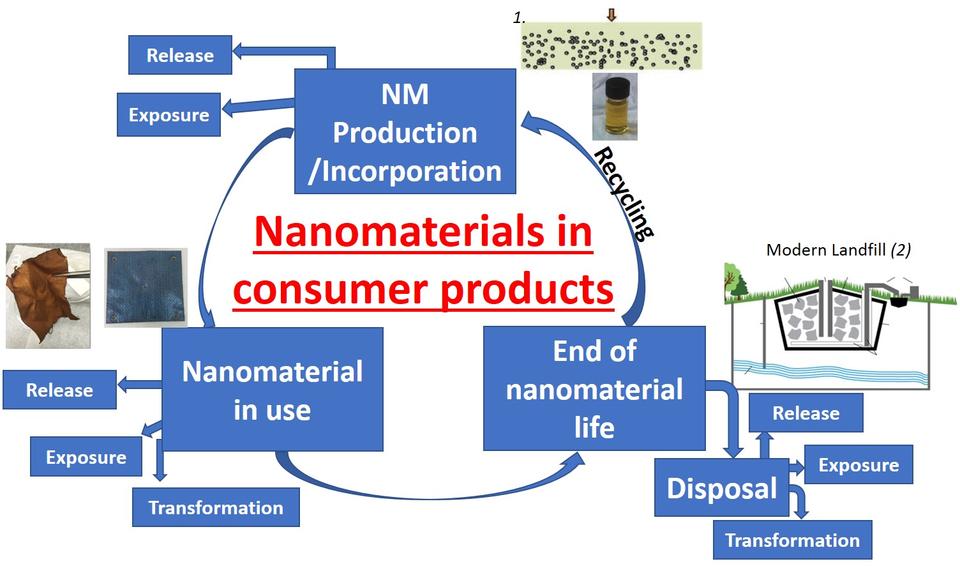Description

Nanomaterials (e.g. carbon nanotubes; silver, gold, copper and silica nanoparticles) are increasingly employed into new and existing consumer products for their novel or improved properties that they can impart. Nano-enabled products, like all products, have stages in their lifecycle of use where they can encounter man-made or environmental factors which may lead them to transform physically and/or chemically from their original form. Additionally, release of the nanomaterials from their products, intentional or otherwise, may lead to their eventual exposure to the public and/or the environment.
In MMSD, we have evaluated many of the potential pathways of transformation and release, mostly in the "production" and "in-use" conditions. Outlined below are select projects that have evaluated different nano-enabled products through the development of controls/control methods, simulating practical use, and others.
Other specific projects
- Development of test materials and methods for detecting nanosilver in textiles
- Release from consumer use nanocomposites
- Chemical transformations of silver nanomaterials in commercial textiles

